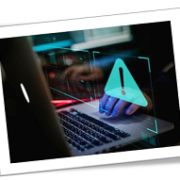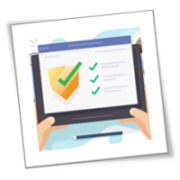In recent years, remote work has become more popular. While this working arrangement offers many benefits, it also creates numerous security risks. This blog post will provide tips on how to improve your and your employees’ cybersecurity when working remotely.
Create clear remote work policies
Your company should have clear policies in place that outline the security measures that employees must follow when working remotely. This includes using strong passwords, connecting to secure networks, and being careful about what information they share online. Make sure to communicate these policies to all employees and that they understand and adhere to these.
Secure home networks for remote workers
Home Wi-Fi routers are often less secure than business routers, so remote workers need to take extra steps to secure their home networks. These steps include changing the default router password, installing the latest firmware updates, and using WPA2 encryption settings.
Use a virtual private network (VPN)
A VPN is a crucial cybersecurity tool for remote workers, especially when they need to connect to public Wi-Fi networks. It encrypts your internet traffic and routes it through a secure server, making it harder for cybercriminals to track your online activity or intercept your data.
Use a password manager
A password manager stores all your passwords securely so that you don’t have to remember all of them. It can also generate strong, unique passwords for all of your online accounts, so you won’t be tempted to use weak passwords or reuse the same password for multiple accounts. Weak passwords are easy for cybercriminals to crack, and if you reuse them across multiple accounts, all of your accounts at put at risk if even just one account becomes compromised.
Implement firewalls and anti-malware software
Equip all work devices used by remote workers with firewalls and anti-malware software. Firewalls monitor and control incoming and outgoing network traffic. They can be configured to block specific types of traffic, such as traffic from known malicious IP addresses or ports, or traffic that is associated with known malware. Firewalls can also be used to create whitelists, which allow only specific types of traffic to pass through.
On the other hand, anti-malware software scans files and devices for malicious programs, such as viruses, Trojans, and spyware. It can also block malicious websites and emails, and remove or quarantine malicious programs that have already infiltrated devices.
Keep your software up to date
Software updates often include security patches that address known vulnerabilities. It is important to install software updates as soon as they are available. You can configure your devices to automatically install software updates to make sure you are always protected.
Alternatively, your company can use patch management software to track patches on all registered devices and deploy the most recent updates across all of them.
Back up your data
Regularly backing up your data can help you recover from a data loss event due to device failure, theft, or other unforeseen circumstances. There are two main types of data backups:
- Local backups: Local backups are stored on a physical device, such as an external hard drive or a USB flash drive. Local backups are relatively inexpensive and easy to set up, but they are also more vulnerable to physical damage or loss.
- Cloud backups: Cloud backups are stored on a remote server. Cloud backups are more convenient than local backups because you can access them from anywhere, but they can be more expensive and may require a reliable internet connection.
It’s best to use a combination of local and cloud backups for the best protection. This will ensure that you have a copy of your data even if one backup fails.
Be careful of phishing scams
Phishing scams typically involve emails or messages that look like they are from legitimate companies, such as banks or government agencies, to trick victims into revealing personal information, such as passwords or credit card numbers.
To reduce your chances of falling for a phishing scam, follow these tips:
- Check the sender’s email address carefully. Phishing emails are often sent using email addresses that are slightly altered versions of those of legitimate companies.
- Be wary of clicking on links or opening attachments in emails or messages, especially if they seem suspicious or come from unknown senders.
- Look for signs of a fake website, such as a misspelled URL or a missing lock icon in the address bar.
- Don’t enter personal information into a website that you are unsure is legitimate.
- If you are not sure if an email is legitimate, contact the sender directly to verify its authenticity.
Remote work setups can pose many cybersecurity risks, but you don’t have to address them alone. Our technology experts can provide IT guidance, implementation, and maintenance to help you protect your business and its data. Contact us today to learn more.
If you are looking for an expert to help you find the best solutions for your business talk to GCInfotech about a free technology assessment
Published with consideration from TechAdvisory.org SOURCE











